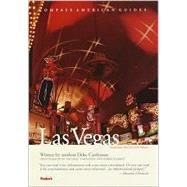
| Introduction Desert Roots -- From the Precambrian to the Paiute | |
| Map of Las Vegas and Vicinity | |
| Paleo-Indians | |
| The AnasaziLas Vegas Band of the Southern Paiute | |
| European Contact | |
| Twentieth-Century Paiute | |
| Unnatural History -- Boom Town, Doom Town, Zoom Town Helen Stewart | |
| The Company Town | |
| Slow But Steady | |
| The Best Town by a Dam Site | |
| The Founding of the Strip | |
| Gangster Angst | |
| Two Bombs Drop on Southern Nevada"I Just Met a Man | |
| Who Isn''t Building a Hotel" -- Joe E. Lewis | |
| Stalemate | |
| Howard Robard Hughes | |
| "Mob on the Run | |
| "Viva Vegas!Cityscape -- A Tale of Seventy Hotels | |
| The Fabulous Flamingo | |
| Map of the Strip | |
| The Thunderbird | |
| The Desert Inn | |
| The Horseshoe | |
| The Sahara | |
| The Sands | |
| The Showboat | |
| The Riviera | |
| The Frontier | |
| The Fremont | |
| The Hacienda | |
| The Tropicana | |
| The Stardust | |
| Map of Downtown | |
| The Aladdin | |
| Caesars Palace | |
| Circus Circus | |
| The International/Las Vegas Hilton | |
| Bally''s | |
| And the Hotels Just Kept on Coming | |
| The Mirage | |
| The Rio | |
| Excalibur | |
| Luxor | |
| Treasure Island | |
| MGM GrandFive More in Eight Months | |
| Stratosphere | |
| Monte CarloNew York-New YorkOrleans | |
| And the Casinos Keep Rolling Along | |
| Gambling -- Vice is Nice Gambling Through The Ages | |
| Gambling Comes to America | |
| Nevada -- The Gamble State | |
| The Gamble of Legalized Gambling | |
| Negative Expectation | |
| Wheel Games | |
| SlotsCraps | |
| Video Poker | |
| Baccarat | |
| Blackjack | |
| Sex, Lies, And Las Vegas Block | |
| Roxie''sMoe, Bugsy, and Girlie | |
| Is There or Isn''t There?Howard and Joe | |
| The Sixties Catch Up to Las Vegas | |
| Today''s Market | |
| DAY Trips -- Slipping the Grip of The Strip | |
| Sights Around TownMap of Greater Las Vegas | |
| Heading out of TownRed Rock Canyon | |
| Table of Contents provided by Publisher. All Rights Reserved. |
The New copy of this book will include any supplemental materials advertised. Please check the title of the book to determine if it should include any access cards, study guides, lab manuals, CDs, etc.
The Used, Rental and eBook copies of this book are not guaranteed to include any supplemental materials. Typically, only the book itself is included. This is true even if the title states it includes any access cards, study guides, lab manuals, CDs, etc.
Excerpted from Compass American Guide to Las Vegas by Deke Castleman
All rights reserved by the original copyright owners. Excerpts are provided for display purposes only and may not be reproduced, reprinted or distributed without the written permission of the publisher.